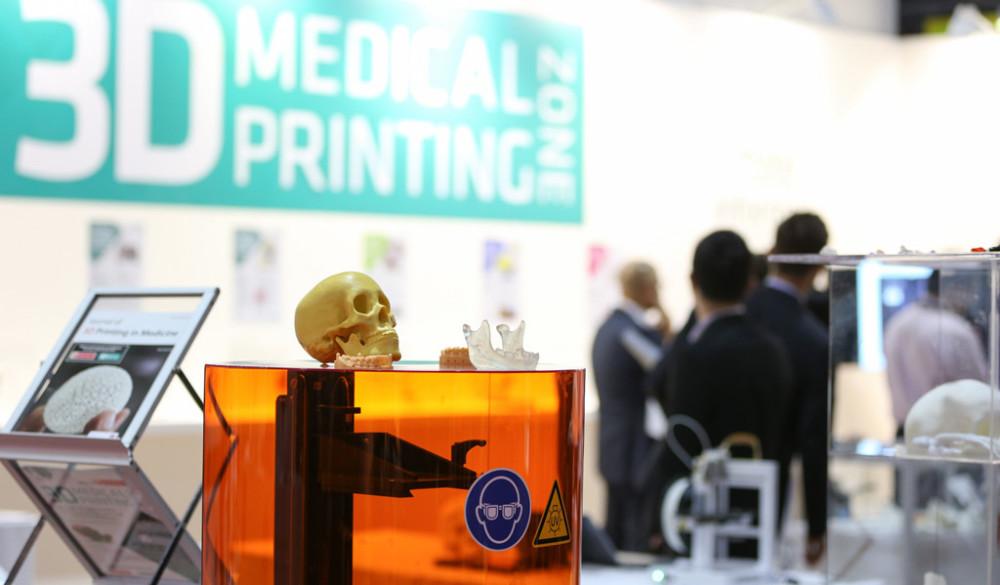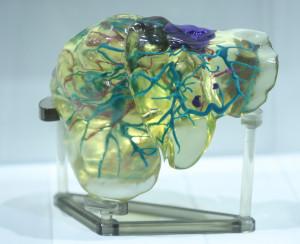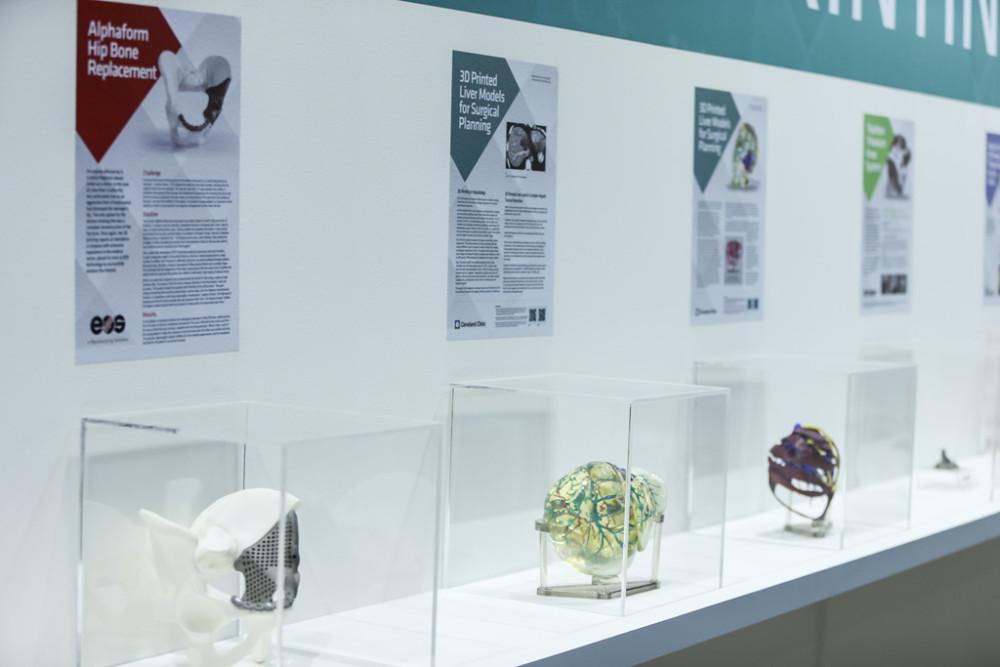 In the last few years, medical applications for 3D printing have been exploding in virtually every market in the world, with one curious exception. While the Middle East hasn’t shied away from it, for some reason they really seem to be dragging their feet when it comes to a wider adoption of 3D printing technology. Just about every industrial trade show on the planet has been lining up to bring more 3D printing companies to their shows, however at last week’s Arab Health exhibition 3D printing was almost an afterthought. While the show did have a dedicated Medical 3D Printing Zone and a 3D Printing Conference, neither was very large, especially in comparison to the rest of the show.
In the last few years, medical applications for 3D printing have been exploding in virtually every market in the world, with one curious exception. While the Middle East hasn’t shied away from it, for some reason they really seem to be dragging their feet when it comes to a wider adoption of 3D printing technology. Just about every industrial trade show on the planet has been lining up to bring more 3D printing companies to their shows, however at last week’s Arab Health exhibition 3D printing was almost an afterthought. While the show did have a dedicated Medical 3D Printing Zone and a 3D Printing Conference, neither was very large, especially in comparison to the rest of the show.
The Conference touched on all of the basics, but the line up of subjects was rather dry and didn’t seem to stir up much excitement from the press. The subdued showing at Arab Health is not especially surprising for people who keep on eye on the industry, as other than Israel there just doesn’t seem to be much happening there, both on the consumer or the manufacturing side of the market. With only one local on-stage presence at the Conference, Dr. Jamal Jomah from Saudi Arabia’s plastic surgery clinic MedArt, who held a discussion on his company’s new 3D printed procedure preview service, the lack of interest in medical 3D printing at the show was glaring.
More than anything, the indifference to medical 3D printing applications seems to be tied to the Middle East’s general disinterest in 3D printing technology as a whole. That lack of interest seems rather uncharacteristic of a region that is, even more so than Asia, usually first in line for any newly developed tech. So why exactly is the Middle East dragging its feet when it comes to 3D printing? Dr. Jomah told Wamda.com that he believed that the primary cause was the geographic accessibility of 3D printing technology, but that just doesn’t seem right to me.
Traditionally, local manufacturing in the region has never been a priority, and many countries are more than happy to bring in goods, technology and materials from China or Europe. While oil has primarily been the focus of most industrial and scientific investments, recently many of the region’s countries have been investing heavily in developing new technology and attempting to diversify their economies. And countries like Turkey and Iran are becoming global research hotspots that are contributing to scientific journals at a rate almost four times higher than the rest of the world. If ever there was a market where 3D printing should be on fire it is the Middle East, especially the wealthier nations like the UAE and Saudi Arabia.
“It is something we have been talking about recently and the potential is there, but we have to wait and watch the approach in the region. It is too early and one of the reasons is that this region is predominantly transactional. Places like the US and China are driving this growth, in those markets you have a fair level of local consumption happening, but in this part of the world [the market] still has not reached that level of maturity,” global industry research firm IDC Middle East and Africa’s Ashwin Venkatchar explained to Abu Dhabi’s first English publication The National two years ago, and very little has changed since.
Mohamed Elawad — the founder and CEO of 3D Organs, a 3D printing start up in Abu Dhabi that 3D prints educational and patient specific anatomical models — believes that cost is a primary reason for the lukewarm reception. The technology is still emergent, and on both the industrial and medical applications side, is still quite costly. The lack of a local manufacturing source for 3D printers will drive up the cost of course, especially considering the Middle East’s primary supplier of technology China hasn’t quite caught up to industrial 3D printing equipment from the more expensive US or European markets.
Given the fact that 3D printing has become so widely embraced by the world and at this point is an important and irreplaceable part of the manufacturing industry, it is unlikely that the Middle East will be able to ignore 3D printing for long. Despite the limited presence and attendance of Arab Health’s 3D Printing Zone and the 3D Printing Conference, many attendees expressed optimism and suggested that things would be changing soon. Dubai-based startup AlemHealth co-founder Sajjad Kamal expressed a lot of interest from his telemedicine and digital health company, who saw 3D printing as an exciting new market that could enhance their services.
“If you’re in a remote area, in places that don’t have access to stuff, what are you going to do? So, being able to transcend that whole supply chain barrier, or even time difference, for example ‘3D print this part, we’ll guide you through it [the procedure]’ I think is fascinating,” Kamal told Wamda.
In the last year some of the world’s biggest 3D printer manufacturers have started to target the Middle East, and local hospitals have been slowly warming up to 3D printing technology, but it is happening a lot slower than many would expect. The region’s financial concerns may be causing the slow adoption of 3D printing technology, but it may not be in the Middle East’s best interest to keep avoiding it. With the world importing less oil from the Middle East, resulting in a $350 billion drop in revenues, and the threat of a new global recession on the horizon thanks to China’s wobbly economy this is the wrong time for a major world market to be left behind. Discuss your thought on this latest global show in the Arab Health Exhibition Featuring 3D Printing forum over on 3DPB.com.
Subscribe to Our Email Newsletter
Stay up-to-date on all the latest news from the 3D printing industry and receive information and offers from third party vendors.
You May Also Like
3D Printing News Briefs, April 13, 2024: Robotics, Orthotics, & Hypersonics
In 3D Printing News Briefs today, we’re focusing first on robotics, as Carnegie Mellon University’s new Robotics Innovation Center will house several community outreach programs, and Ugogo3D is now working...
Rail Giant Alstom Saves $15M with 3D Printing Automation Software 3D Spark
3D Spark has entered into a three-year deal with the rail giant Alstom. Alstom, a transport behemoth with annual revenues of $16 billion, specializes in the manufacture of trains, trams,...
Meltio Expands Global Reach with New Partnerships in the Americas and Europe
Spanish 3D printing manufacturer Meltio has expanded its sales network across the globe. With the addition of three new partners in the United States, Brazil, Argentina, and Italy, Meltio aims...
3D Printing Webinar and Event Roundup: April 7, 2024
Webinars and events in the 3D printing industry are picking back up this week! Sea-Air-Space is coming to Maryland, and SAE International is sponsoring a 3D Systems webinar about 3D...



































